2019-01-04
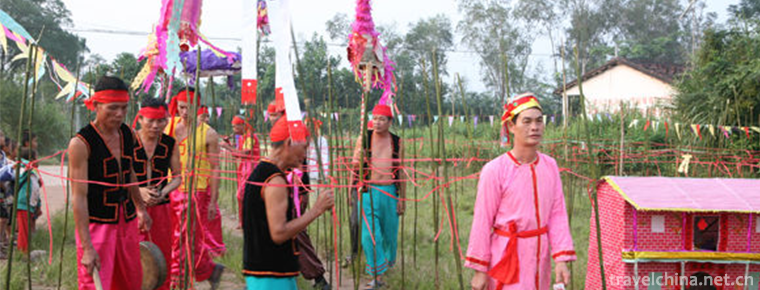
- By ChinaWiki.net
- Chinese Edition
- 2019-05-11
Ancient dance Lao Gu dance
Ancient dance, the meaning of "breaking through the barrier" in Li language, is called "ancestor-telling" in ancient books. The ancestor worship originated from the primitive society of Li nationality. Because it is old, it is called ancient dance. Before liberation, ancient dances were found in the villages of the Li nationality in Xishui Township, Yuanmen Township, Baisha Town, Yaya Town and the adjacent Qiongzhong Li and Miao Autonomous County. Later, only in Xishui Township remained.
On May 23, 2011, the ancient dance was approved by the State Council and listed in the third batch of national intangible cultural heritage list.
Historical evolution
Ancient dance is a very ancient dance, the scene is very strange, very grand, very spectacular.
Ancient dances are performed when ancestors are sacrificed. Anyone who suffers from illness, nightmares or unlucky events should "tell his ancestors" and ask them to bless him and help him overcome disasters. If there is no special accident, the village should hold a "ancestor-telling" every three years, and dance ancient dance activities to worship ancestors.
As early as the Song Dynasty, the records of ancient dances were recorded in Zhu Fan Zhi: Li people were "vulgar and ghost-worshippers, who had nothing to do with medicine, and slaughtered livestock to make drums and music for sacrifice, which was called blessing".
Zhang Qingchang of the Qing Dynasty wrote in The Records of Li Qi: "In case of illness, slaughter cattle to the ancestors, or in the wild or in the house, as you like."
According to some historical records, the village elders (village elders) presided over the ancient dance in the early stage, and the "Daogong" presided over the dance in the Ming Dynasty. Later by familiar with the "ancient dance" of the old artist (lead dancer) presided over.
Xiaoshui Township is not far from Baisha County Town. In some villages of Xiaoshui Township, there are old dances left behind.
Forms of expression
There are many roles, which is an important feature of the ancient dance which is different from other Li dances.
There are many kinds of instruments in the band, such as clapper, Bida, clapper, drum, Gong and cymbal.
Ancient dances were attended by a large number of people, dozens of people in a small number and hundreds in a large number. Before liberation, almost everyone in the village participated in the dance of ancient dances. It was a comprehensive activity integrating sacrifice, dance, celebration and entertainment. But the most valuable part is the numerous roles and actions in dance.
In the dance, the main roles are more than 12 people, with different division of labor. There are specific appellations in Li language: wearing square caps, wearing red robes, girdling waist with red cloth strips, holding a cup in the left hand, holding a chopstick in the right hand, representing men in the dance. He is the leader of the whole dance team. He is called Gou Da in Li language. He is at the front of the team. "Xita" is the leader of the dance team, located at the end of the dance team. The dancer, who represents the female surname in the dance, wears the same clothes as "Goodbye" and holds a 30 cm wooden stick in his right hand. The end of the stick is bound by a dust brush of white linen thread, which symbolizes the deer's tail. "Gouta" leads the dance and "Xita" presses the dance. One after another, a man and a woman echo each other in the whole dance.
"Parman Vega" refers to a male dancer. In this role, there are four small roles, one playing deer, two playing hunters, one holding a shotgun, one holding a long knife, the other two holding carp lanterns, two holding lanterns, and the other holding ancestral spiritual cards. They all wear traditional male costumes of Li nationality.
These roles all come from life. In many Li dances, many dances are closely related to life and production, and ancient dances are no exception. They contain more roles and are more closely related to life.
In addition to these roles, there is also a "Baibu Weiga", men dressed as women, wearing tight flower dresses, holding a chimney. "Tinking down", that is to say, pretending to be a mad fool, dressed up by two people, wearing masks, one for men, one for women.
"Criticize Lu", dress up as a female clown. A leaky bamboo basket was carried around the waist, and things were picked up everywhere and put into the basket, but what was left behind made people laugh.
Among the many roles, the male clown "climbing bald" has its own characteristics. Wearing a straw hat and holding a short stick, a bunch of straw was woven into the shape of male genitals and tied to the waist, aiming at female reproductive offspring. The role of "climbing bald" is not common in the dances of many minority nationalities in our country, but it exists in the dances of Li district, which shows people's desire and respect for the reproduction of future generations in Li society.
In addition to these roles, there are bands and freely participating villagers, with unlimited numbers.
cultural significance
The general plot of the dance is divided into four sections. The first paragraph is "starting a teacher". It means to start the ceremony of ancestor worship. "Gou" stands before the altar to drum the white drum. It means "big drum" and "big drum". Today, please call our ancestors spirits to join us. We have abundant rice and rice, sweet rice wine, hunting and mountain pigs, and women weave beautiful clothes. Without forgetting the ancestors, we celebrate this wonderful festival together. After reading it, the dancers circled around the four mortars, called "walking four", and asked the four ancestors and gods to return, holding carp lanterns, lanterns, etc. The dancers led the way in front of the lights.
The second part of the dance is "Kaique". It means that living relatives welcome the return of ancestors and gods. "Gouta" takes dancers to circle around six mortars, indicating a long way to meet.
At the end of the opening ceremony, the third paragraph is "shouting", which is the essence of the dance. The living people are happy with the spirits of their returning ancestors. The dancers are chasing and playing around the 12 rows of two rows of pits. They also perform some kinds of mountain hurdles (a dry glutinous rice), hunting (hunters and deer performing artists), fishing (Clown fishing on the "Lu Lu", bamboo basket missing, laughing), and clown climbing. Baldness "expresses mating with straw rope, chasing women, meaning" ancestors please rest assured that our offspring will live on forever". The masked man pretends to be mad and sells fools, representing the return of ancestors and gods and the joy of living relatives. Other participants danced hand-throwing and foot-kicking dances with gongs and drums, and sang folk songs to encourage dancing. The fourth part of the dance was "going to Hongwei", meaning to send the ancestors and gods back. Incense burning on the field, firewood burning around, bright lights, "Gou it" with people winding around the door-shaped bamboo row, ended in a warm atmosphere. Finally, the knots tied to bamboo are unfastened to show that the ancestors and gods have relieved disasters and difficulties, and to bless the village with good weather and peace for all ages.
In the ancient Li dance, there are many roles, and the whole dance is divided into sections, each with different themes. It can be seen that dance has a profound manifestation in the Li people. The ancient dance shows the ancestor worship and sacrificial rites and traditional production and living customs formed by the Li people since the primitive society. It has thousands of years of folk inheritance history. At the same time, the display of folk music and dance with national characteristics is also a way of folk self-entertainment.
Inheritance status
Ancient dance conveys many important information about human reproduction, production and life, religion and belief since the primitive society. It is a living fossil of human history. It is of great value to anthropology, ethnology and folklore studies, and has a high value of artistic appreciation.
With the changes of the times and the impact of fashion culture, the ritual of sacrificing ancestors has gradually disappeared, and the ancient dance is in danger of extinction.
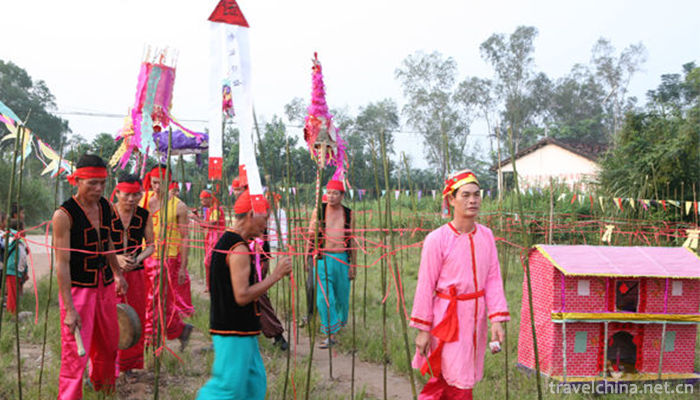
Ask a Question
Your email address will not be published.
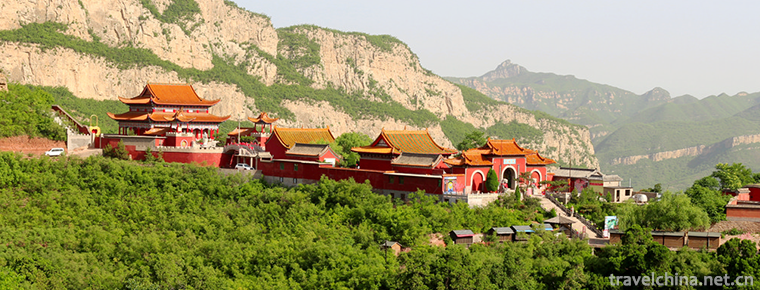
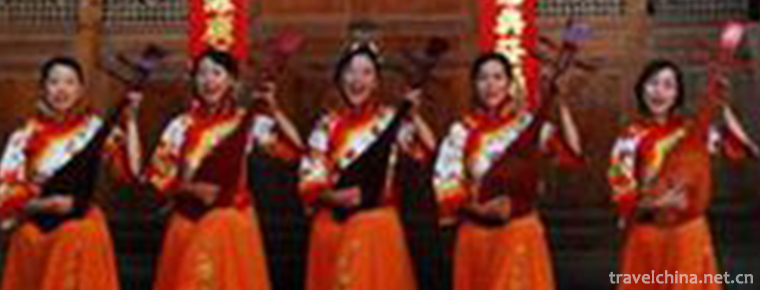
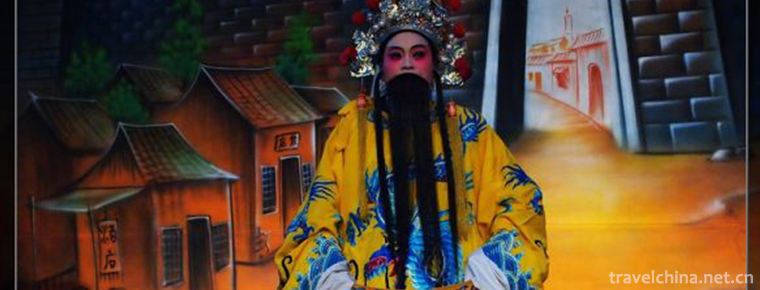
0 Questions